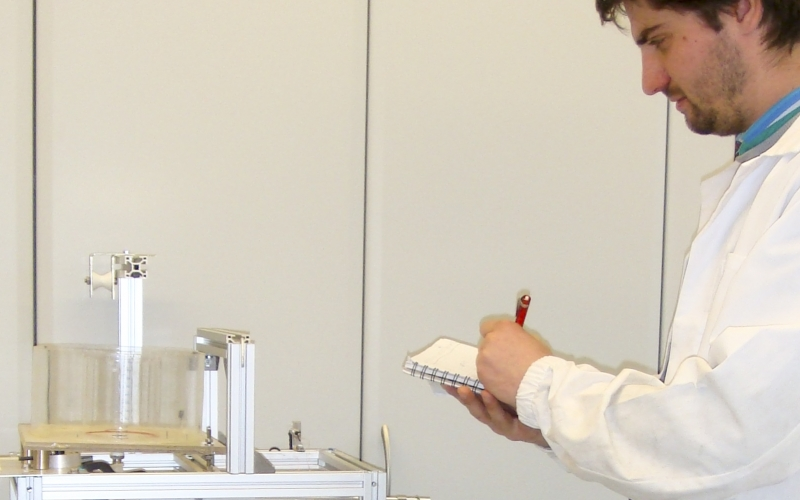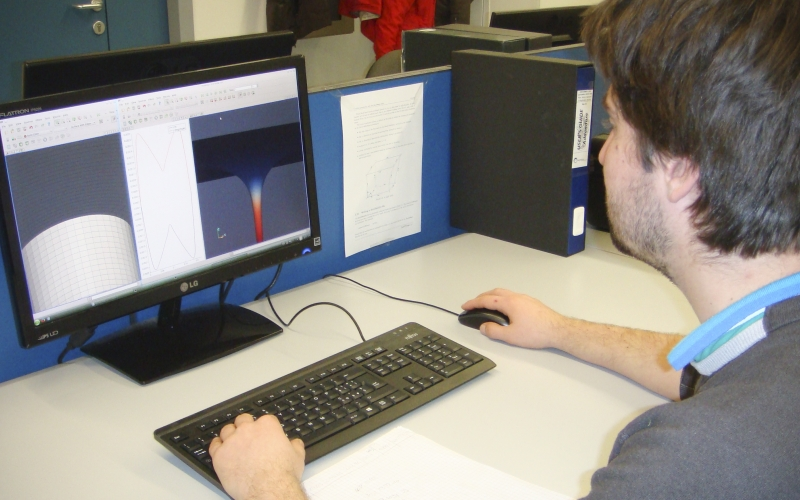Cloud-based simulation of steel casting
Ergolines is an Italian SME supplying control systems to the steel-making industry. Its main focus is on the continuous casting area where liquid steel becomes a solid mechanical structure. The simulation of the casting process enables control systems to be designed which enable steel-casting plants to operate more efficiently and profitably. Such simulations would previously not have been accessible to an SME for reasons of cost and expertise. The use of Cloud-based-HPC simulations has enabled Ergolines to develop better control systems with significant benefits for its customers and to its presence in the marketplace.
The Challenge
In the field of continuous casting there is an increasing industrial demand for the development of new technologies for preventing slag transfer from the ladle to the tundish. Such an event may cause a breakout, that is the breaking of the solid skin of the solidifying cast products, which results in hazardous dispersion of liquid steel within the industrial plant. Ladle-slag monitoring is currently performed by operators on an empirical basis. Given the relevance of both safety and the economic implications of a breakout, there is a significant demand for an effective, automated system for ladle-slag monitoring. While passing through the ladle shroud, liquid slag induces characteristic vibrations which can be measured. In order to develop an effective detection system, it is necessary to correlate the vibrational signal with the fluid dynamics of the system. Such a correlation requires a complex, detailed simulation, which can only be carried out on an HPC system.
The Solution
Dedicated HPC-based simulations followed by case experimental validation have provided Ergolines with key insights into the physics of the system and into different ladle-emptying mechanisms. As a result, it has been possible to establish a correlation between the shroud vibrational signal and the fluid dynamics of the system. The results obtained constitute the basis for the development of an innovative slag monitoring technology based on vibrational analysis, which would significantly contribute to both better occupational safety and greater productivity of steel plants. Previously Ergolines was using simulation in its design process. However this case study was their first experience of HPC and the benefits it could bring.
The Benefits
Given the complexity of the phenomenon to be simulated, a very fine discretization in terms of geometry and time is needed in order to obtain accurate results. Such a fine discretization involves a significant computational load and therefore requires adequate computational capabilities. As the company does not possess the necessary computational infrastructure, the possibility of using Cloud-based HPC resources proved fundamental in addressing this specific industrial and scientific challenge. In fact, the availability of a cloud-based HPC system allowed Ergolines to exploit supercomputing resources and reduce computational times without having to sustain the high costs of a dedicated infrastructure, used for only part of the time. The use of such an HPC resource can contribute to a significant reduction in time to market and improved product design. The results attained by the HPC-based fluid-dynamic analysis set the stage for the development of a new product for automatic slag detection in steel continuous casting, a promising technology envisioned to bring significant benefits to the end-users both in terms of occupational safety and productivity of steelworks.
The ability to detect slag while it is passing through the shroud would enable a steel plant to control the closing of the ladle better and so increase the steel yield. For an average ladle size of 100 tons, usually 0.5 to 1% of steel remains in the ladle. Using the proposed slag monitoring technology, 60% of that lost steel can be saved. On an average production of 1 million tonnes of per year, a medium-size factory could then save 6,000 tonnes of steel that do not need to be re-melted.
The re-melting of 6,000 tonnes of steel would cost approximately €70 to €100 per tonne, namely 420,000€ to 600,000€. Additionally the loss of a further 300 tonnes of steel for a cost of 70,000€ could be avoided. This means a total saved amount up to 670,000€ saved per year per medium sized steel plant.
Casting is a high energy-consuming process. It is very easy to see what this means in terms of energy saving for the re-melting of 6,000 tons of steel of each steel plant equipped with the proposed monitoring technology.



